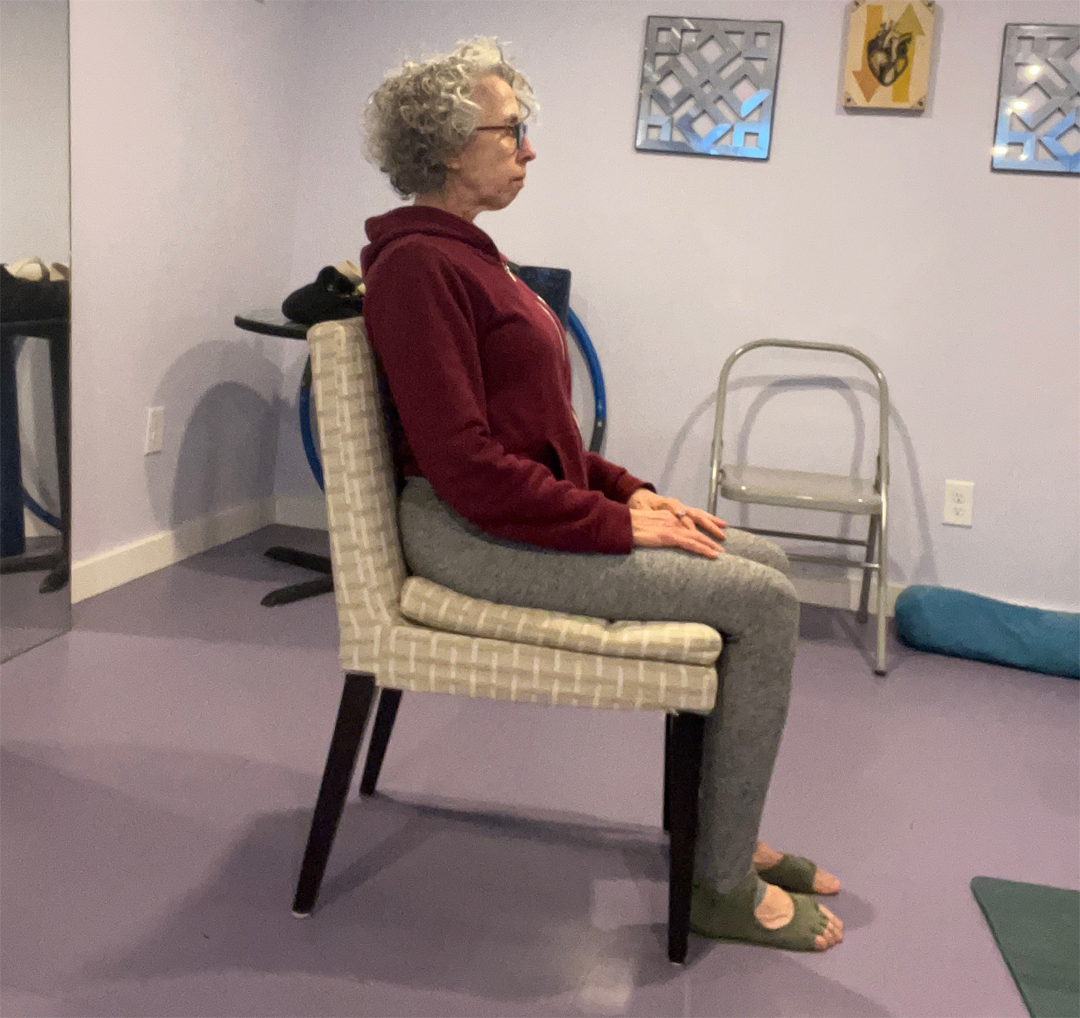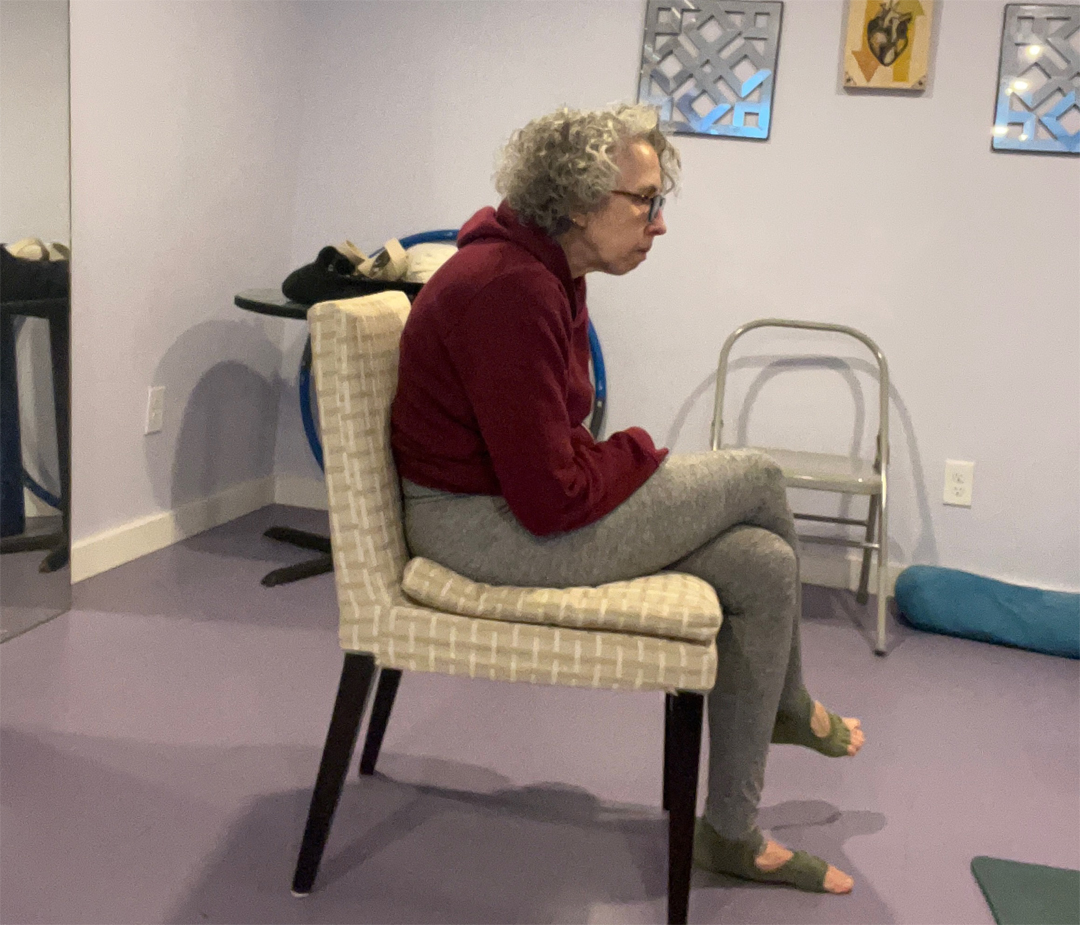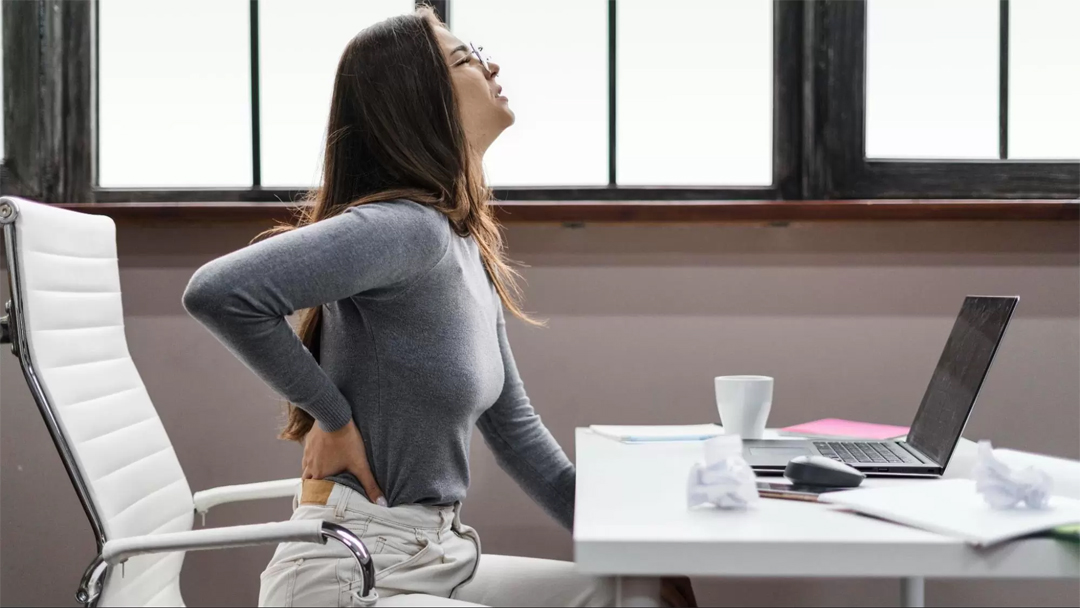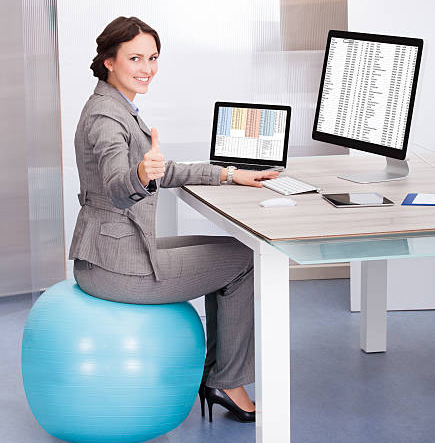By Andrea Lepcio Founder and Owner at Mighty Fit
We sit for work, sit to commute, sit to eat, and sit for fun. We sit a lot.
It was Dr. James Levine, a professor of medicine at the Mayo Clinic, who compared sitting with smoking. His exact phrasing was more graphic, “Sitting is more dangerous than smoking, kills more people than HIV, and is more treacherous than parachuting. We are sitting ourselves to death.“
Dr. Levine is commenting on the undisputed fact that modern life involves much sitting. People who work likely sit for breakfast, commuting, morning work, lunch, afternoon work, returning home, computer use, dinner, reading, television, and hobbies. Retirees do for meals, transportation, computer use, reading, hobbies, and television. Everybody does on the john.
As part of an American Cancer Society’s Cancer Prevention II study in 2010, the American Journal of Epidemiology reported that sitting for more than 6 hours a day increases the risk of death by up to 49%.

The Science of Sitting
In Yoga, we call it chair pose, and in fitness, we call it squatting. If you hinge your hips and bend your knees, you use your leg, core, and back muscles to lower down and rise back up.
Similarly, lowering yourself into a chair and rising back up is relatively active for most people. Notice if you engage your muscles to reach the seat in a smooth motion or if you come partway down and then release your muscles and plop the rest of the way. People with weaker legs and glute muscles will likely hear the sound of landing on a chair. You can work to strengthen your legs and hips to land more smoothly.
Once seated, different habits take form. You can choose to sit more or less actively. Active sitters feature good posture and an engaged core. Most often, both feet are on the floor in front of them. They may sit against the back of the chair or on a backless chair. If perched on a fitness ball, the core will be active front, back, and side to keep balance.
Inactive sitters will relax all muscles and slouch. They may cross their legs at the knee, which impacts circulation and can cause blood clots. Muscles may be stretched or compressed; joints may be impacted, blood pressure increases and numbness may occur in the lower leg.

It is common for arm bones to slide forward as the upper back curves. The chest, trapezius, and neck muscles tighten and shorten while the mid and lower-back muscles lengthen and weaken. Sometimes, people allow their heads to drift toward a computer or screen. This forward head position puts pressure on neck muscles as the head becomes heavier the further forward it reaches.
If you sit for several hours without getting up:
- You will get little physical activity
- You’ll burn fewer calories
- The lack of movement affects the fascia under the skin. This loose connective tissue creates a bodysuit from head to toe. When you move less, the tissues become more viscous and dehydrated, making movement more difficult the longer you don’t move.
- Your muscles will tend to atrophy, and your joints will stiffen
These effects will influence those who sit inactively the most. The severity will depend on how long and how you sit. Dr. Levine’s research confirms that even if you exercise, sitting for hours a day can have a negative effect that exercise doesn’t counteract.

Note that some people are at risk for diseases separate from their sitting habits. Researchers identify the following risks from excessive sitting:
- Back pain and poor posture
- Risk of exacerbating osteoarthritis
- Weight gain and obesity
- Increased blood pressure
- High blood sugar. “Meta-analysis (10 studies) suggests there is a 112% greater relative risk associated with a large duration of sedentary behavior for type 2 diabetes,” according to Medicine and Sport Science.
- High cholesterol levels and what is known as metabolic syndrome. Sitting slows your body’s ability to process fats.
- Increased risk of death from cardiovascular disease
- Increased risk of blood clots
- It can lead to, or worse, depression and anxiety.
- Inactivity is associated with cognitive decline
- Increased risk of cancer
What does sitting have to do with cancer risk? The Cleveland Clinic explains, “Research shows that sitting for long periods during the day increases your chance of developing certain types of cancer, including:
- Colon cancer
- Uterine (endometrial) cancer
- Lung cancer
- Prostate cancer

The Heart Foundation states, “A 2011 study documented 800,000 people and their sitting habits. The study found that people who sit the most, compared to people who sit the least, have a greater risk of disease and death:
- 112% increased risk of diabetes.
- 147% increased risk of cardiovascular events like heart attack and stroke.
- 90% increased risk of death from cardiovascular events.
- 49% increased risk of death from any cause.
Why Sitting Is Compared to Smoking
Once upon a time, cigarette ads showed doctors enjoying cigarettes. According to Yale University Library, “Cigarette companies often advertised smoking as a way to stay happy and healthy.” Whether or not you were a smoker, you inhaled smoke in public spaces and homes. It wasn’t until 2000 that smoking was entirely banned on airlines. Smoking was considered normal, and it took decades for the risks to become publicly accepted.
Sitting for hours a day is so ordinary that it is also considered normal by most people. However, the health risks of this habit have only recently come to light.
The health damage from smoking is costly: according to the Centers for Disease Control and Prevention, smoking causes 480,000 deaths per year and costs over $300 billion.

The CDC reports statistics for sedentary behavior and physical inactivity that goes beyond sitting: The direct healthcare costs in the United States are $117 billion annually, with approximately 300,000 deaths per year.
Smoking does greater damage, but the number of people who sit for long periods far exceeds those who smoke.
Counterarguments and Perspective
Researchers with the American Journal of Public Health are insulted by the analogy between sitting and smoking. They feel it makes smoking seem less harmful, and tests have not proven the risks of sitting to be as drastic as the risks of smoking.
There are plenty of bad health decisions to choose from. Smoking and drinking top the list. Poor nutrition, lack of hydration, bad posture, overworking, high stress, insufficient sleep, and an unhealthy environment are harmful.
Sitting is an essentially unavoidable health factor. Even active people sit for some portion of their day. Smoking is a choice; sitting is a necessity.
Three dynamics magnify the health implications: the number of hours one sits, how actively or inactively one sits, and how inactive one is outside of sitting.

Strategies to Mitigate the Risks
Awareness of the problem can help with mitigation. If you know you sit for hours, you can make choices to lessen the impact on your health.
- Watch your posture. Sit actively. Poor posture is quite fatiguing. You will feel better if you sit tall on your sits bones, activate your core to lift your torso, lift your chest, allow your shoulder to settle down and back, and float your head above your neck even with your chest. This might feel like a slight chin tuck.
- Set a timer that reminds you to stand or move every 30 minutes. Take advantage of needs like a restroom break. Pair the need for movement with the need for something to drink. You can simply stand and sit again. Better, you can walk across the room and back. You can do a stretch or quick exercise.
- Try a standing, treadmill, or biking desk.
- Try a fitness ball or other active chair.
- Stand when you can, such as on the phone or in a meeting.
- Add activity throughout your day. Take the stairs instead of the elevator. Park further from your destination. Commute on foot or bicycle. Stand while commuting by subway or bus.
- Schedule walks for gatherings of 2 to 4 people.
- Schedule 20-60 minutes six days a week for the cardio workout of your choice. Sneak an exercise snack in one of your 30-minute stand-ups.
- Schedule resistance training workouts so you work out each muscle group two to three times a week. This might be a whole-body alternate day schedule or a body daily schedule. Sneak an exercise snack in one of your 30-minute stand-ups.
- For less fit people, they can include light-intensity physical activity (LIPA) into their day. Pick safe activities. Avoid strain or fatigue.
As mentioned, exercise isn’t enough to counteract sitting. If you have the good habit of getting a minimum of 150 minutes of moderate exercise per week, you will still improve your health outcomes if you take advantage of these recommendations to break up your time when sitting.

I am a personal trainer who works out for at least two hours each day. Nonetheless, I alternate between a standing desk and sitting on a fitness ball. I limit my time in chairs to under three hours, sit actively, and get up and down frequently.
Conclusion
The good news is that individuals can make changes to benefit their health. Interrupting sitting time with movement, exercise, or, at a minimum, standing will improve outcomes. Adding a regular exercise program will help prevent a host of diseases. Whether you are 20 or 80, these changes will help you maintain your health.
Disclaimer
The Content is not intended to be a substitute for professional medical advice, diagnosis, or treatment. Always seek the advice of your physician or other qualified health provider with any questions you may have regarding a medical condition.